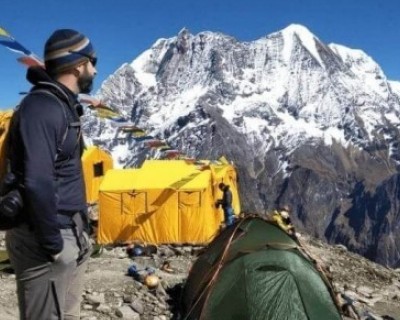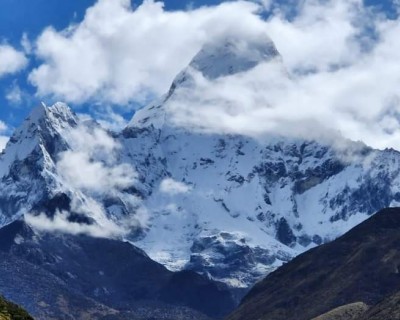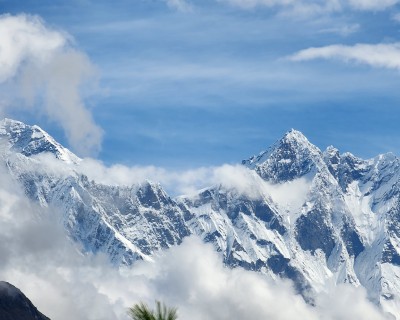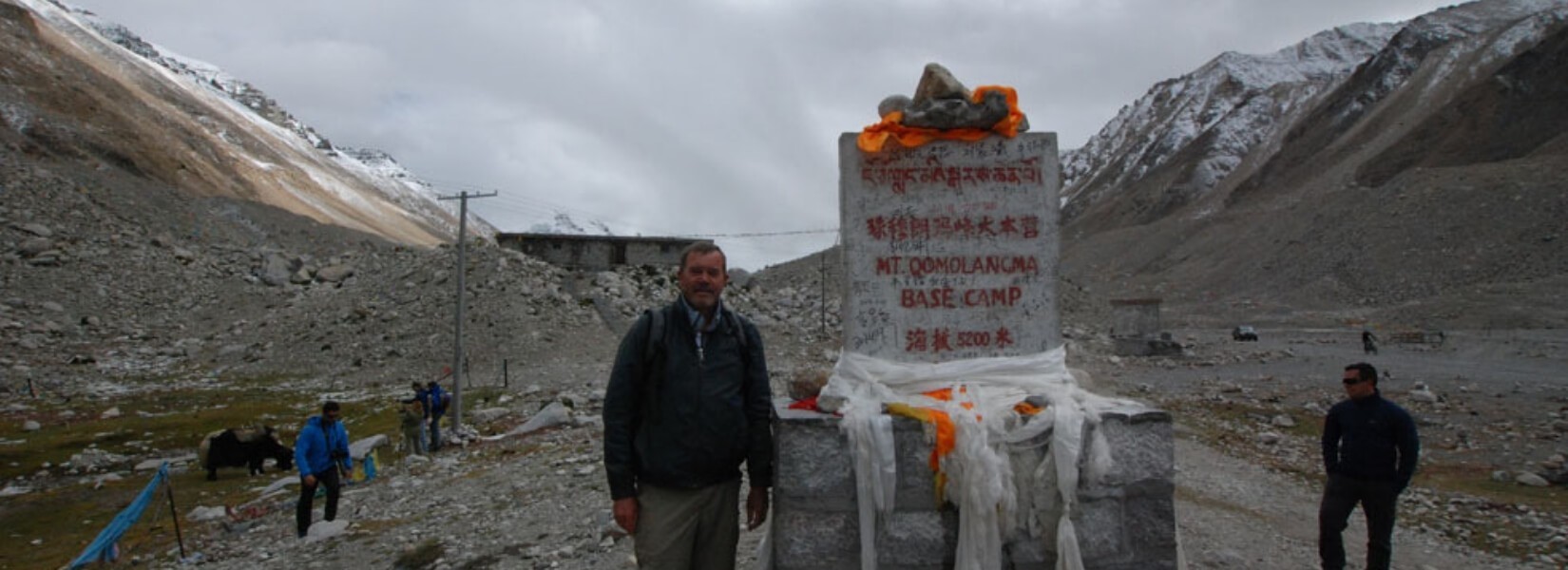
Major attractions of the Everest Base Camp Trek
• Everest Base Camp itself.
• Mt. Everest- Iconic world's highest mountains.
• Adventurous mountain flight to Tenzing Hillary Airport Lukla.
• Sagarmatha National Park: a UNESCO world heritage site.
• Namche Bazar: the dense settlements of the Sherpa people.
• Tengboche Monastery, the oldest and the largest monasteries of the Khumbu region.
• A teahouse trek- you will rest and overnight in the tea house.
• Magnificent views from Kalapather.
• Views of over 7,000 snow-capped mountains
• Sherpa culture museum view.
• Adventure peak climbing
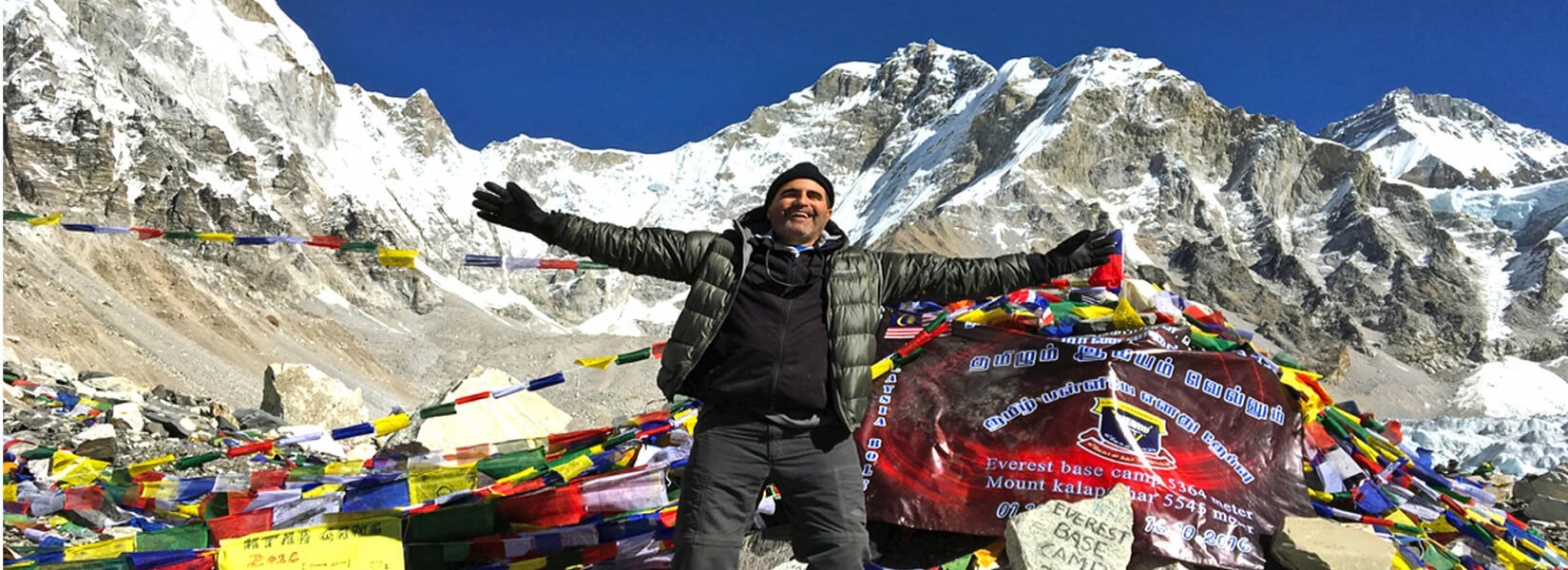
Reasons to go for the Everest Base Camp Trek
Himalayan views
Everest region is the home of numerous snow-capped mountains, an abode of the six highest mountains in the world including Mt Everest, Lhotse, Makalu, and Cho you. The main reason to go for Everest Base Camp Trek is to view the inspiring outlook of the snow-capped mountains, enjoy a glimpse of the mountains through the landscapes of the Everest region of Nepal. Playing hide and seek with the highest mountains, and crossing through forests covered with the bloomed rhododendrons, trekking to the Everest Base Camp is amazing.
Friendly people with a unique culture
Everest region is also known as Sherpa region, here all you see is the Sherpa people, they are very kind, friendly and full with the warm hospitality, they have their languages, religion, culture. Sherpa people are very popular as mountain climbers in the world. It is good to say NAMASTE to the people by joining both palms and bowing down your head because it’s a formal greeting and sounds good to the locals. You will get to experience warm hospitality, and satisfying meals. If you are lucky then you may get to see their age-old cultural programs during the Everest Base Camp Trek. Meeting them, interacting with them, and exchanging the culture with them add glory to your trek. Reviewing the park where Birch, juniper, blues pines, firs, bamboo, and rhododendrons are covered in the major highlights here.
Wild flora and fauna
The best part while trekking is walking through the dense evergreen forest covered with the bloomed rhododendrons, crossing the suspicious bridge joining the two hills, collecting the thrilling experience, and walking through the scattered villages of Sherpa. Walking through and exploring the Sagarmatha National park, you will see the wide area of forest covered by Birch, juniper, blues pines, firs, bamboo, and rhododendrons. At least 118 species of birds are present in the region including some rare ones like Himalayan monal, blood pheasant, red-billed chough, and yellow-billed chough. If you are lucky during the hike you will also see the rare mammal species including musk deer, snow leopard, Himalayan black bear, and red panda. Himalayan Thar, langur monkey, Himalayan wolves can as well be seen. You get to see many more from this short trek so the Everest base camp trek is worth going to.
Designed for all
Trekking to the world's highest mountains, you might have the question like it's not for the first time trekker? not a family trek? not for aged people? Then you are wrong, Everest base camp is a family trek, solo trek, and friends trip as well. To be experienced in adventure hikes is a plus point, but if you are a first-time trekker then also there's no problem, you can have the amazing trek with Nepal Hiking Trek and their guide.
This trek is designed for all just you have to be physically and mentally fit to trek to the basecamp of the World's highest peak.
Reasonable price
Trekking to the world's highest mountains, the offered price by your agency is quite reasonable and for you, it's quite affordable too. Sometimes you might question yourself that the trek packages you choose and the itinerary worth that amount? well, let me tell you, trekking to the Everest region means you will be trekking to the remote area of Nepal, where there is a lack of communication, transportation, fancy things, foods, and many things, to get these you might have to pay a little extra.
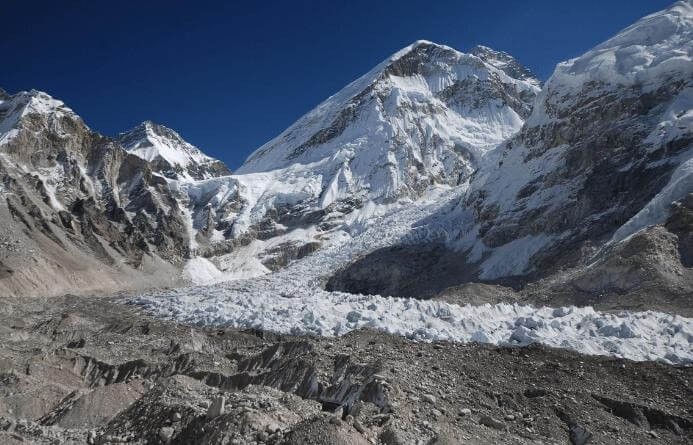
Trip facts
o Trekking destination: Nepal
o Trekking Region: Everest/Khumbu region of Nepal's North East Himalayan Region
o Trekking days: 16 days
o Trekking distance: 135 kilometers
o Trek difficulty: moderate to adventurous with tough of high altitude
o People and culture: The majority of Sherpa people with high influence on Tibetan and Buddhist culture.
o Accommodation: Hotels and lodge during the trek
o Maximum elevation: 5545 meters (Kalapathhar) and 5,364 meters (Everest Base Camp).
o Average walking per day: 4 to 6 hours or as per itinerary days.
o Best season: March to May and September to November, however, can go throughout the year. Due to the climate and temperature, it's quite difficult to trek in the monsoon months of July to mid-September and December to February.
Other FAQ'S related to the Everest Base Camp Trek
Planning to trek to the base of the world's highest mountains might need some helpful suggestions during the trek. Well, here I have listed some frequently asked questions by the people that may help you a lot for your Everest Base Camp Trekking.
Where is Everest Base Camp?
Everest Base Camp is at the Everest Region, at the bottom of the world's highest mountain Mt Everest, located in northeastern Nepal. Trekking through Namche bazaar crossing the Sagarmatha National Park, you can reach there.
What is the height of Everest Base Camp?
Everest Base Camp is about 5,364 meters. You will trek to Base Camp from Lukla after enjoying the short flight from Kathmandu to Lukla.
Total days it takes to reach base camp?
After entering Nepal, you will have a day to explore around Kathmandu valley. It takes around 8 days to reach the base camp from Kathmandu with the adventure flight to Lukla. You will have 2 days rest and accommodation days. It takes 3 days to trek back to Lukla and fly back to Kathmandu.
How hard is it to Hike to Everest Base Camp?
Everest base camp is not difficult but the higher altitudes will make it very difficult to trek. You may suffer from altitude sickness or can get frostbite but if you have previously experienced and trek above 3000 meters, then it may not be a problem.
What are the total hours I need to walk per day?
Normally you have to walk around 4-6 hours a day but it also depends upon the packages you choose and the length of the itinerary. If you choose to complete the trek within a very short period then you have to walk more hours than average to complete the trek in time and vice versa.
When is the best time to trek Everest Base Camp Trek?
You can trek throughout the year, but sometimes the weather and temperature can make your walk very difficult. So to face fewer problems with pleasant weather, trekking in Autumn (September to November) and spring (March to May) is the best time to trek Everest Base Camp. Being slippery throughout the months and due to freezing cold, trekking in monsoon and winter can put you in difficulty but it's not bad to trek for those who want to experience more adventure.
Can the old and children do Everest Base Camp Trek?
Yeah, both the old and the children can do the Everest base camp trek just they need to have some extra days to acclimatize and rest. The children are better at a high altitude and have less chance of altitude sickness than older people.
What is the shortest itinerary for the Everest Base Camp Trek?
If you are busy and have a very short itinerary then 9 days trek is best for you. In this itinerary, you will have 8 days to reach the Everest Base Camp and the next day you can fly back on a helicopter. This itinerary is the shortest trekking itinerary of the Everest Base Camp Trek. If you want to skip the trek and just reach in a very short time then you can choose helicopter flight tours that just need a couple of hours to reach the base camp and you can then fly back to Kathmandu.
Can I use normal drinking water or need to buy bottled water?
Sometimes drinking the same water as local might cause diarrhea or other health issues. So to avoid this it's better to carry your water bottle with water purification tablets. Buying the water bottled everywhere can be costly so it's better to carry your water bottle and purification tablets.
Do I need to bring my own tent for the Everest Base Camp Trek?
If you are planning to enjoy the fire camp to make your trek more adventurous and interesting then you can bring one. Otherwise, you don't need to bring a tent with you because you can get a lodge and teahouse to spend overnight.
Can I get a hot shower bath during the Everest Base Camp Trek?
You can get a hot shower bath but you have to pay from your pocket. A hot shower bath is not included in your package and may cost you more.
How are the toilet facilities during the Everest Base Camp Trek?
The toilets are quite remote but very neat and clean. But at the higher altitude due to the extreme cold, it may freeze sometimes. They are indoor so you don't need to go out at the night.
What kinds of foods are available during the Everest Base Camp Trek?
During the trek to the remote area don't expect to have more things on the menu. You can see limited options like local food items, momo, chaw-min, french fries, pan-cake, and few others. Trekking means you need high energy throughout the day and the junk foods lack to provide you with this, so it's better to intake the local foods to get enough energy. The food here is cooked by the basic trained cooks so the taste can quite differ.
Does altitude sickness bring serious problems?
Altitude sickness itself is a serious problem while walking at a high altitude. But it is not a big issue for everyone. It's better to share everything with your guide if you discover any symptoms of altitude sickness. It's better to share so that they can give you its treatment as required. It can even cause serious death due to negligence. Remember prevention is always better than cure. So don't rush to reach your final destination, take rest as per your body need, and follow some safety measures to be safe and enjoy your trip.
What should I bring for the Everest Base Camp Trek?
It is one of the most tricky questions 'what should I bring for the Everest Base Camp Trek?' But you should make the best choice for what to carry and what not to carry. You should know that sometimes carrying too much or too little can spoil your trek. First of all, you should be sure which season is best for you to trek. You should be up to date about the months and seasons, know about the temperature, weather, and many more factors. After being up to date with the weather, choose the season and you can pack the gears accordingly.
You can purchase the below-listed gears and types of equipment in Kathmandu or can also rent in Namche bazaar but understand that buying the sold gears and equipment can make your trek cheaper. However, local equipment may not be too standard to trek in the altitude.
So try to buy high-quality gears for the Everest Base Camp Trek as you may have to face the very cold condition on the trek.
Clothing
Upper Body
• Base Layer
• Insulation layers
• Outer Layer
For the lower body
• Trekking trousers and shorts
• Trekking T-shirt
• Waterproof jackets and Trouser
• Underwear
Headwear
• Hat
• Scarf
• Beanie
• Neck gaiter
Gloves
• Inner gloves
• Outer insulated Gloves
Footwear
• Hiking Boats
• Trekking Shoes and Sandals
• Hiking socks
• Warm Thermal Sock
• Gaiter
Besides these you also need to pack the below-listed things :
• Bay pack
• Buffer Bag
• Duffel Bag
• Rain cover
• Sleeping bags
• Liner
• Earplugs
• Trekking poles
• Sunglasses
• Headlight
• Water bottles
• Towel
• Lock
• Waterproof bags
• Camera
• Portable charger
• Books
• Cards
• Passport and money
More tips for Everest Base Camp Trek
• Always respect the culture and tradition of the local people. People in the Himalayan region are warm-hearted and hospitable. So never abuse their trust.
• You must be updated with the weather condition as the weather condition of Nepal can change unpredictably and frequently at the high altitude so you might have to change your itinerary if necessary. So while trekking in Nepal, keep yourself updated about the weather all the time.
• Everest base camp is at a high altitude and is a risky trek so you need to hire a professional guide to succeed and for a beautiful completion of the trek.
• Never try to take Everest Base Camp Trek lightly. While preparing for it, carry only the necessary items needed for the trekking. Buy all the required equipment before trekking to this region.
More things to know about the Everest Base Camp trek
Safety and security
Nepal Hiking Trek conducts its operations following the safety protocols and gives the authority to the guide whether to conduct or cancel the trip due to the weather condition of the trekking region or due to safety concerns. However, we will always try to make you not face loss (Physically and mentally), any other injuries due to landslides, flooding, and other natural disasters while trekking
So we remind you to carry insurance that covers this unknown disaster. Always follow the safety measure while trekking in a remote area, first of all, try to be safe yourself. Follow the day itinerary given by the guide; follow the steps of your guide during the trek to complete it peacefully.
Travel insurance
Trekking to the Everest Base Camp Trek means you will trek to and from, hike up and down, and also spend around one and half weeks in the remote area. Here trekking is not dangerous but risky, so you should get travel insurance for the Everest Base Camp trek.
As you should know, insurance is compulsory for the trekkers trekking to Everest Base Camp. You may be stuck in some problem, there are high chances of getting serious problems like altitude sickness, which is enough to drag in the mouth of death, so to claim the small injuries such as sprained ankles or loss of the equipment. You can claim the money easily from the insurance you get.
Everest Base Camp Trek is a worthy trek so what are you waiting for? Go and pack your bag and start the adventure journey.
If you want to know more about trekking in Nepal then you can contact us: [email protected]





